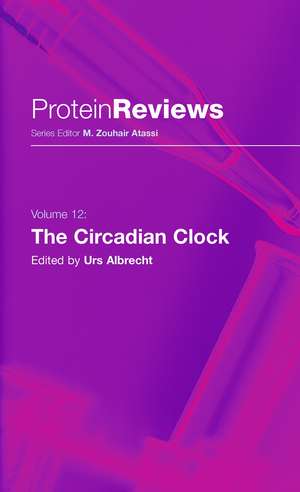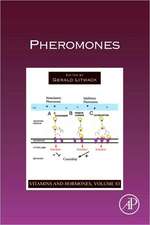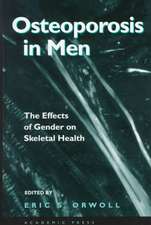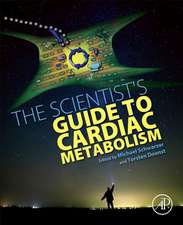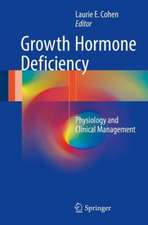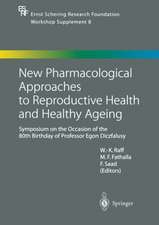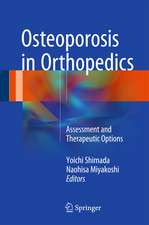The Circadian Clock: Protein Reviews, cartea 12
Editat de Urs Albrechten Limba Engleză Paperback – 4 mai 2012
| Toate formatele și edițiile | Preț | Express |
|---|---|---|
| Paperback (1) | 727.48 lei 6-8 săpt. | |
| Springer – 4 mai 2012 | 727.48 lei 6-8 săpt. | |
| Hardback (1) | 645.79 lei 6-8 săpt. | |
| Springer – 9 dec 2009 | 645.79 lei 6-8 săpt. |
Din seria Protein Reviews
- 18%
 Preț: 945.92 lei
Preț: 945.92 lei - 15%
 Preț: 641.85 lei
Preț: 641.85 lei - 18%
 Preț: 950.03 lei
Preț: 950.03 lei - 18%
 Preț: 944.67 lei
Preț: 944.67 lei - 18%
 Preț: 1226.60 lei
Preț: 1226.60 lei - 15%
 Preț: 696.82 lei
Preț: 696.82 lei - 18%
 Preț: 1278.02 lei
Preț: 1278.02 lei - 5%
 Preț: 1422.87 lei
Preț: 1422.87 lei - 5%
 Preț: 1098.48 lei
Preț: 1098.48 lei - 5%
 Preț: 1418.68 lei
Preț: 1418.68 lei - 5%
 Preț: 1436.41 lei
Preț: 1436.41 lei - 23%
 Preț: 1211.53 lei
Preț: 1211.53 lei - 18%
 Preț: 1230.21 lei
Preț: 1230.21 lei - 24%
 Preț: 1051.51 lei
Preț: 1051.51 lei - 24%
 Preț: 802.76 lei
Preț: 802.76 lei
Preț: 727.48 lei
Preț vechi: 887.18 lei
-18% Nou
Puncte Express: 1091
Preț estimativ în valută:
139.22€ • 144.81$ • 114.93£
139.22€ • 144.81$ • 114.93£
Carte tipărită la comandă
Livrare economică 14-28 aprilie
Preluare comenzi: 021 569.72.76
Specificații
ISBN-13: 9781461425120
ISBN-10: 1461425123
Pagini: 312
Ilustrații: XII, 300 p. 39 illus., 15 illus. in color.
Dimensiuni: 155 x 235 x 16 mm
Greutate: 0.44 kg
Ediția:2010
Editura: Springer
Colecția Springer
Seria Protein Reviews
Locul publicării:New York, NY, United States
ISBN-10: 1461425123
Pagini: 312
Ilustrații: XII, 300 p. 39 illus., 15 illus. in color.
Dimensiuni: 155 x 235 x 16 mm
Greutate: 0.44 kg
Ediția:2010
Editura: Springer
Colecția Springer
Seria Protein Reviews
Locul publicării:New York, NY, United States
Public țintă
ResearchCuprins
A History of Chronobiological Concepts.- Transcriptional Regulation of Circadian Clocks.- Posttranslational Regulation of Circadian Clocks.- Nonimage Forming Photoreceptors.- Circadian Clocks and Metabolism.- Circadian Clock, Cell Cycle and Cancer.- Comparative Clocks.- Circadian Neural Networks.- The Circadian Clock and the Homeostatic Hourglass: Two Timepieces Controlling Sleep and Wakefulness.- Clocks, Brain Function, and Dysfunction.- Systems Biology and Modeling of Circadian Rhythms.
Textul de pe ultima copertă
This comprehensive book, written by experts in the field, provides historical and current information about the circadian clock, molecular properties of clock components and their roles in health and disease. The Circadian Clock includes advances in several aspects of clock research with chapters ranging from gene expression, mathematical modeling, physiology, neuroscience and comparitive biology. It aims to give an integrated view how the biochemistry and physiology of an organism is organized over the 24 hours of a day and how disturbance of clock function can lead to disease. The Circadian Clock is an ideal book for researchers, clinicians and graduate students in the fields of biochemistry, cell biology, physiology, neuroscience and bioinformatics.
Caracteristici
Provides historical and current information about the circadian clock, molecular properties of clock components, and their roles in health and disease Offers an integrated view regarding how the biochemistry and physiology of an organism is organized over the 24 hours of a day and how disturbance of clock function can lead to disease Includes supplementary material: sn.pub/extras
